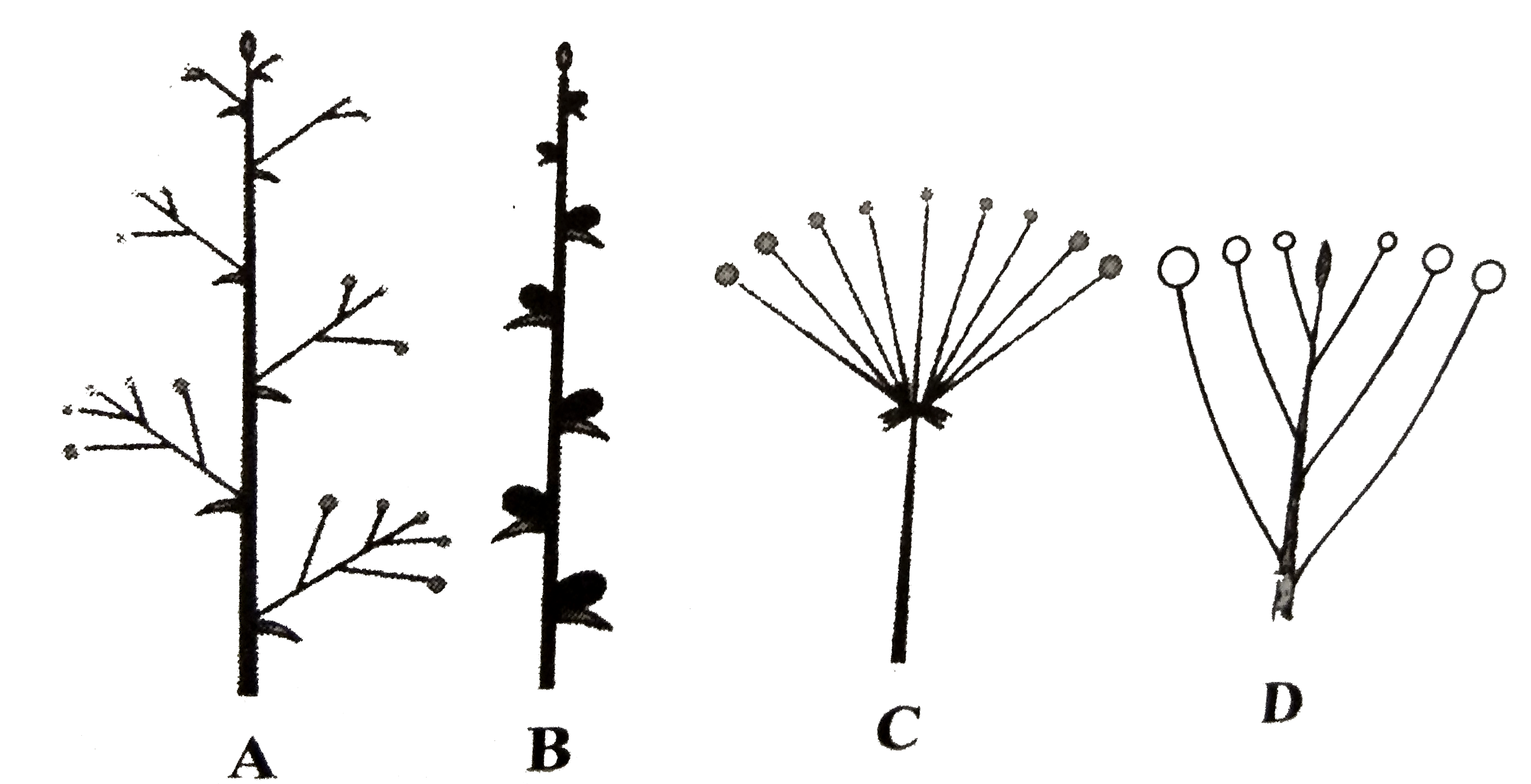This shows compound inflorescence
sunflower
zinnia
marigold
neem
The correct Answer is:d
Step-by-Step Solution
1. Understanding Inflorescence:
- Inflorescence refers to the arrangement of flowers on a plant. It is important to identify the type of inflorescence to answer the question correctly.
2. Identifying the Options:
- The options given are Sunflower, Zinnia, Marigold, and Neem. We need to determine which of these shows a compound type of inflorescence.
3. Analyzing the First Three Options:
- Sunflower, Zinnia, and Marigold all belong to the family Asteraceae (the Sunflower family).
- This family is characterized by a type of inflorescence known as "Capitulum" or "head," which is a type of racemose inflorescence.
- Since Capitulum is not classified as a compound inflorescence, these three options are incorrect.
4. Analyzing the Fourth Option (Neem):
- Neem belongs to the family Meliaceae (the mahogany family).
- This family is known for having a compound inflorescence. In compound inflorescence, the flowers are arranged along a branched main axis, with lateral branches bearing flowers.
- This arrangement is also referred to as a compound panicle.
5. Conclusion:
- Since Neem is the only option that shows a compound type of inflorescence, it is the correct answer.
Final Answer:
The option that shows compound inflorescence is Neem.
---
- Inflorescence refers to the arrangement of flowers on a plant. It is important to identify the type of inflorescence to answer the question correctly.
- The options given are Sunflower, Zinnia, Marigold, and Neem. We need to determine which of these shows a compound type of inflorescence.
- Sunflower, Zinnia, and Marigold all belong to the family Asteraceae (the Sunflower family).
- This family is characterized by a type of inflorescence known as "Capitulum" or "head," which is a type of racemose inflorescence.
- Since Capitulum is not classified as a compound inflorescence, these three options are incorrect.
- Neem belongs to the family Meliaceae (the mahogany family).
- This family is known for having a compound inflorescence. In compound inflorescence, the flowers are arranged along a branched main axis, with lateral branches bearing flowers.
- This arrangement is also referred to as a compound panicle.
- Since Neem is the only option that shows a compound type of inflorescence, it is the correct answer.
The option that shows compound inflorescence is Neem.
Topper's Solved these Questions
- INFIORESCENCEBOOK - DINESH PUBLICATION ENGLISHCHAPTER - INFIORESCENCEEXERCISE - check your grasp
10 Videos
- HUMAN REPRODUCTIONBOOK - DINESH PUBLICATION ENGLISHCHAPTER - HUMAN REPRODUCTIONEXERCISE - MCQ
770 Videos
- INTRODUCTION BOOK - DINESH PUBLICATION ENGLISHCHAPTER - INTRODUCTION EXERCISE - CYG
10 Videos
Similar Questions
Knowledge Check
In cyathium inflorescence
Asingle male flower is surrounded by female flowersBmale and female flowers are borne in different plantsCthere is only one male and one female flowerDsingle female flower is surrounded by many peripheral male flowersAssertion:Thy cymose type of inflorescence has limited growth.
Reason:In cymose inflorescence the main axis terminates in a flower.AIf both assertion and reason are true and reason is the correct explanation of assertion.BIf both assertion and reason are true but reason is not the correct explanation of assertion.CIf assertion is true but reason is false.DIf assertion and reason are false.
The given figure shows some types fo inflorescences. Select the option that correctly identifies them.

View Solutioninvolucre froms a cup around the inflorescence of
View SolutionAn aggregate fruit develops from an inflorescence.
View SolutionAn edible inflorescence is
View SolutionWhat is inflorescence?
View SolutionCymose inflorescence differs from racemose inflorescence in
View Solution
